Epirus … the northwestern tip of our country, with ancient history and rich cultural tradition, from the areas that first cultivated the idea of the Modern Greek Enlightenment. The contribution of Epirus to the Greek Revolution of 1821 was enormous. Two of the three founding members of the Filiki Etairia (a secret organization aiming to overthrow the Ottoman rule) came from there, Nikolaos Skoufas from Arta and Athanasios Tsakalov from Ioannina. The people of Epirus actively participated in the liberation struggle. However, Epirus was not included inn the newly formed Greek state in 1830. The Arta region was annexed by the Treaty of Berlin in 1881, while the rest of Epirus was annexed by the Balkan Wars of 1912-1913.
So, in our new article we will explore Epirus with the Greek book Εδεσματολόγιον Ιωαννίνων, Άρτας, Πρέβεζας, Θεσπρωτίας by Nadia and Yiannis Saradaporou published by Savalas Publishers. We will see the national benefactors originating from Epirus, study the Epirus house in its aristocratic and folksy form, and learn the famous Epirus pies, from which we have chosen to make the sweet zarkopita.
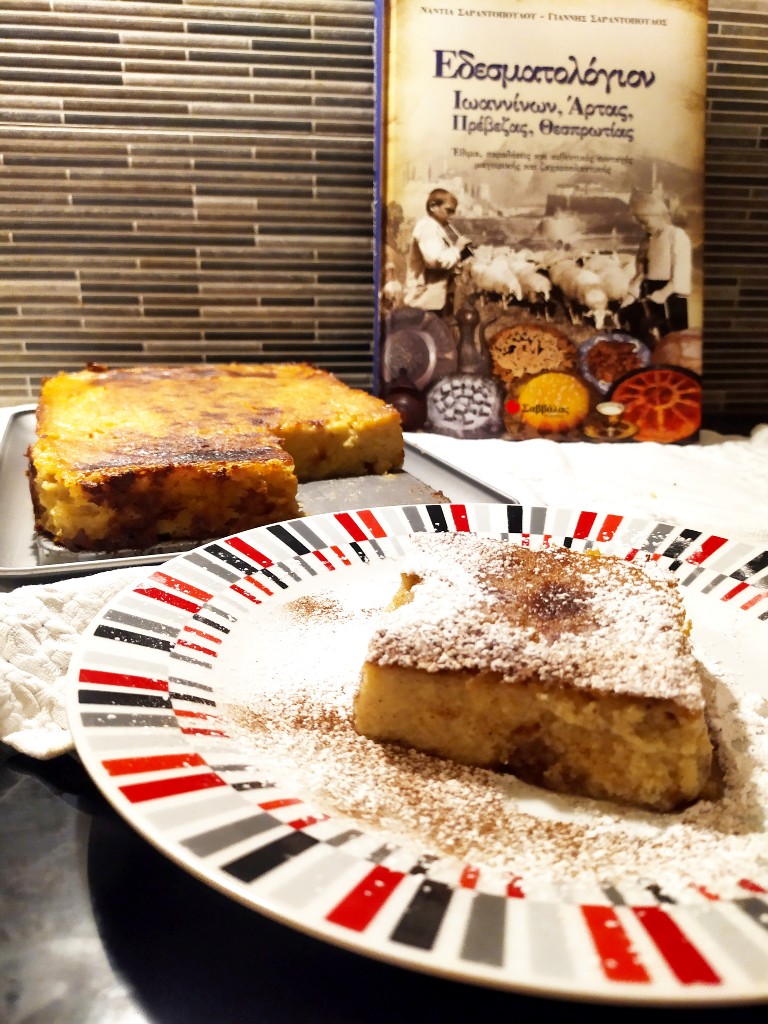
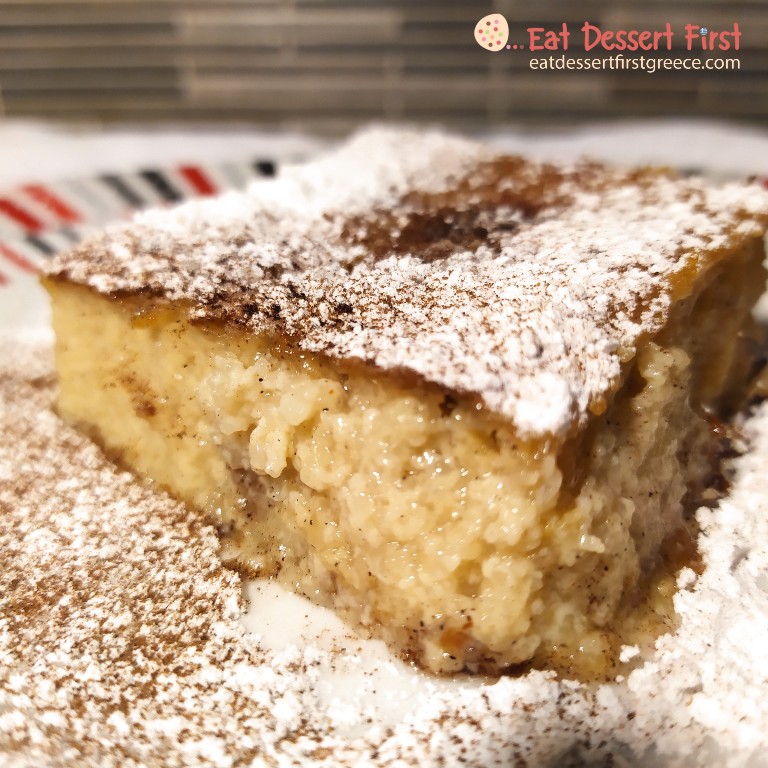
The sky that made so many wonderful spirits born and flourish in Greece still remains the same, as in the times of its flourishing and glory, with the difference that now it shines for a enslaved, humiliated and unhappy people. How, really, and why was the hand of God taken from this Nation, to which it gave a fiery poetry, so many visions, but also so much more misery?
François Pouqueville (Philhellene) Tour of Ioannina in 1800
Εδεσματολόγιον Ιωαννίνων, Άρτας, Πρέβεζας, Θεσπρωτίας (translated bu Eat Dessert First Greece)
The rich donations of the Epirus benefactors were decisive for the education, the culture, the economic recovery, the liberation of Greece and in general the survival of the Nation, we read in the Εδεσματολόγιον Ιωαννίνων, Άρτας, Πρέβεζας, Θεσπρωτίας. Many of the benefactors in the years of slavery emigrated. Although poor in the beginning, they developed commercial and economic relations with the whole world, establishing commercial and banking houses. With their money, the “lassa” have been operating since the years of Turkish rule, aiming at the promotion of education, health and social welfare. National benefactors were the Zosimades brothers, the Rizari brothers and many others. From them come the Zosimaia School and the Rizareios School.
Other national benefactors from Epirus, according to the Εδεσματολόγιον Ιωαννίνων, Άρτας, Πρέβεζας, Θεσπρωτίας were Apostolos Arsakis, Michael Tositsas, Simon Sinas, Georgios Sinas, Georgios Averof, Evangelos Zappas, Konstantinos Zappas, Ioannis Gennadios, Nikolaos Stournaris, Ioannis Pagkas, Christakis Zografos, Zois Kaplanis, Georgios Hatzikostas, Elisavet Kastrisogia and several others. Many of them are associated with imposing neoclassical buildings, landmarks and monuments.
The Εδεσματολόγιον Ιωαννίνων, Άρτας, Πρέβεζας, Θεσπρωτίας travels us to Epirus with many historical and folklore information and beautiful images. Initially it starts from Ioannina and passes through the heroic Souli, Zalongo, Metsovo, Konitsa, Syrtaki, the village of Kalarrytes, Zitsa and ends the journey through space and time with Zagorochoria. Then it starts from Preveza, passes through Parga, Thesprotia, Igoumenitsa, Filiates, Paramythia, Margariti, Sanida, Acheron, Syvota, Parapotamos, Souli, Perdika and ends in Arta.
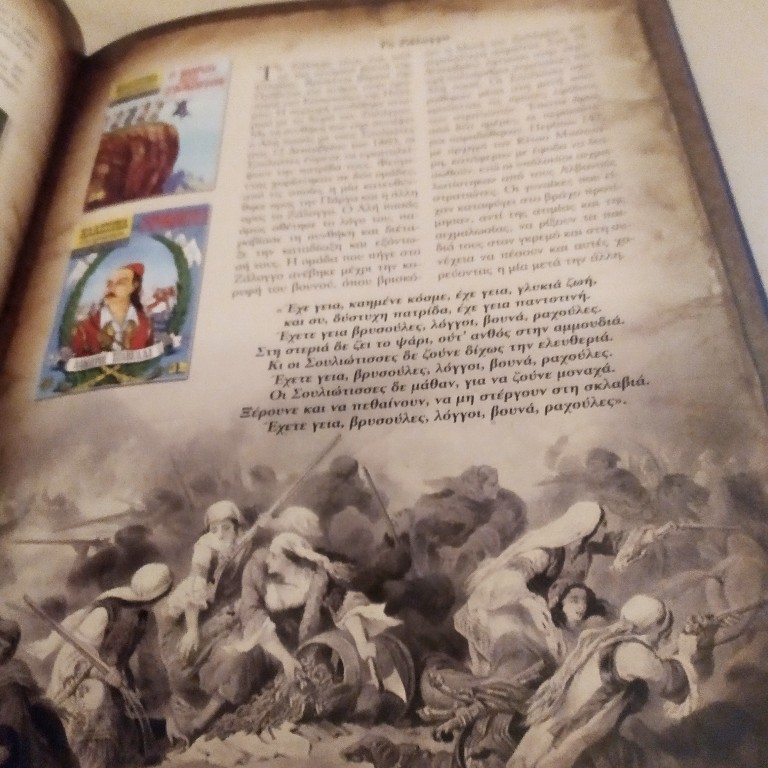

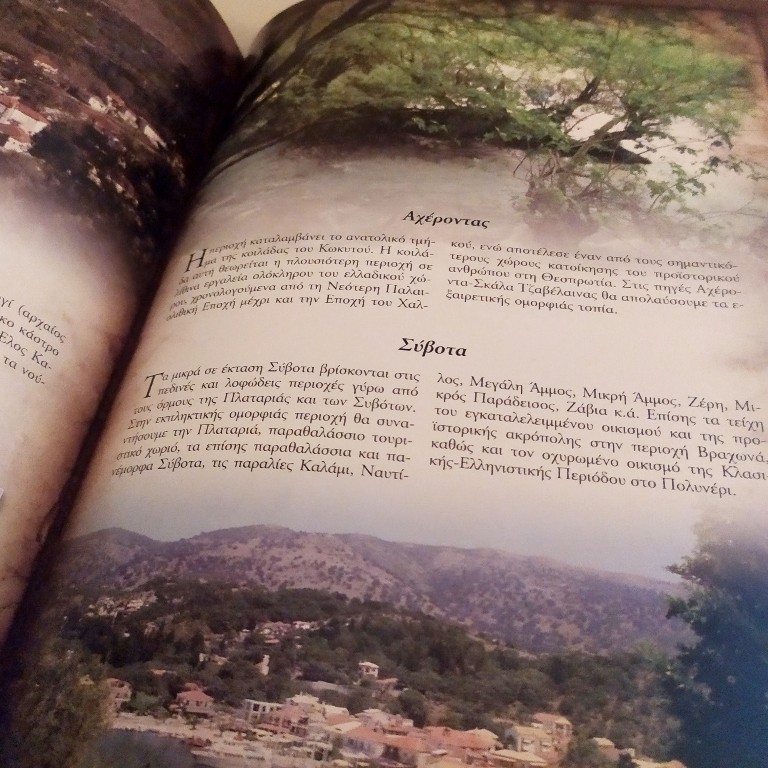
We will focus on the house of Epirus, through the mansions of prominent residents and wealthy merchants and craftsmen. The house of Epirus had the following layout: the katoi downstairs with a large stone gallery, where there were storage rooms and staff rooms, the mezzanine with maid rooms and the host office and the upper floor, called anogi with the iliakon or krevaton, rooms of family members, maid rooms, kitchen, toilet etc.
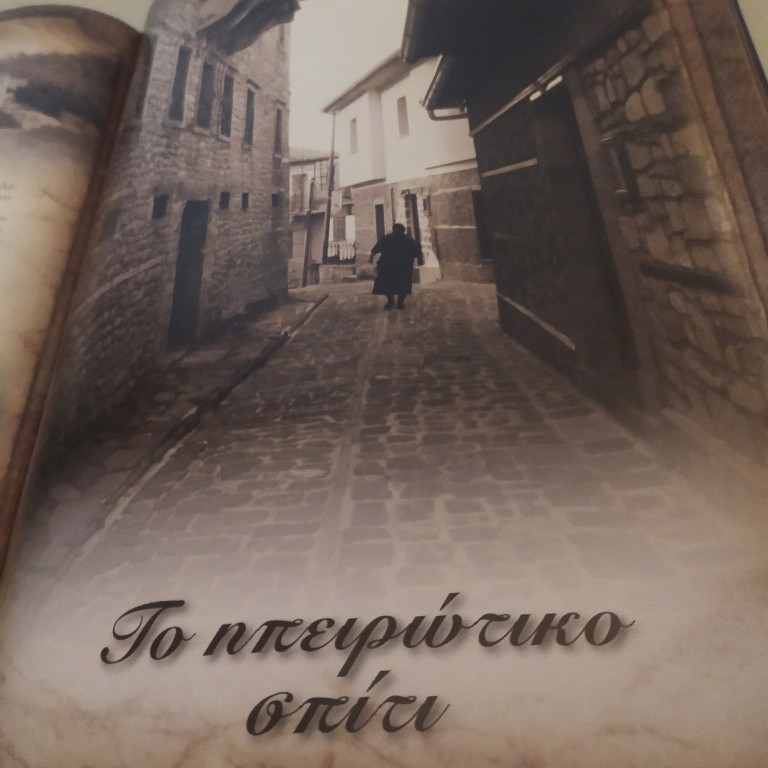
The iliakon, ie the living room, was located in the center of the house. There was also the winter room which was the warmest room of the house, that was used in winter. Around it were the other rooms, mainly bedrooms, an arrangement that as we read in Εδεσματολόγιον Ιωαννίνων, Άρτας, Πρέβεζας, Θεσπρωτίας, has roots in ancient times.
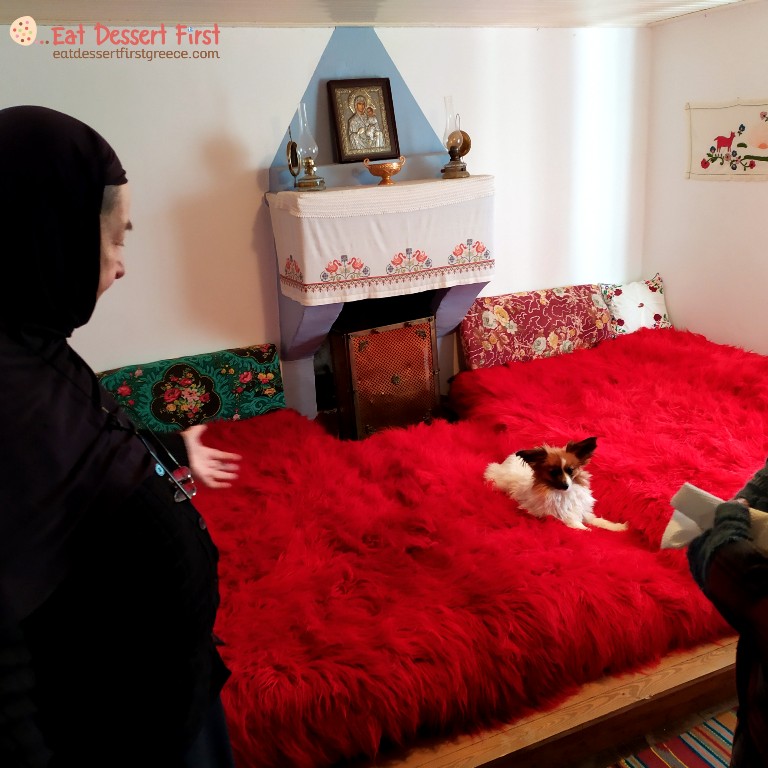
All rooms had a fireplace and large sofas on two or three sides of the room. The floors and the ceiling were made of wood, while the walls were also lined with wood, often wood-carved.
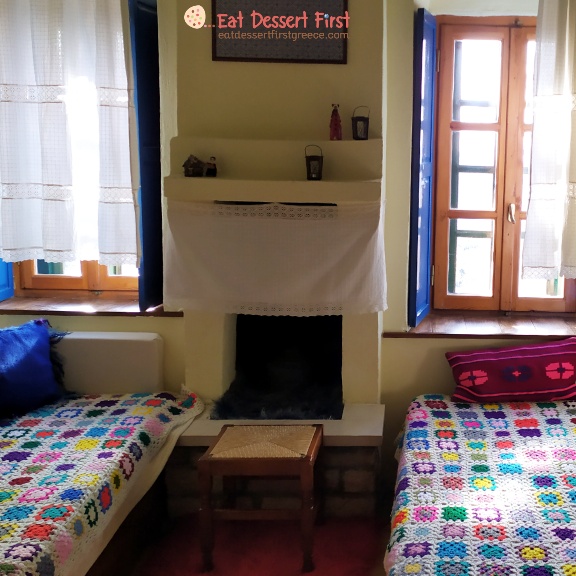

The living room was a place of entertainment, food and reception of visitors. There was no furniture, no beds, no seats, according to Byzantine and Greek custom. When used for sleeping, they laid mattresses which during the day were kept in large cabinets, recessed in the walls. When used for food, the table, usually a large metal tray, was set up on the spot on a tripod. Family members sat around it with pillows on the floor, in the oriental way.
We read that the courtyard played the most important role in everyday life and that is why it was decorated with paved floors, a fountain with water, terraces and plants. As for their architecture, the houses in Epirus had the main entrance and the facade in the inner courtyard and not towards the street.
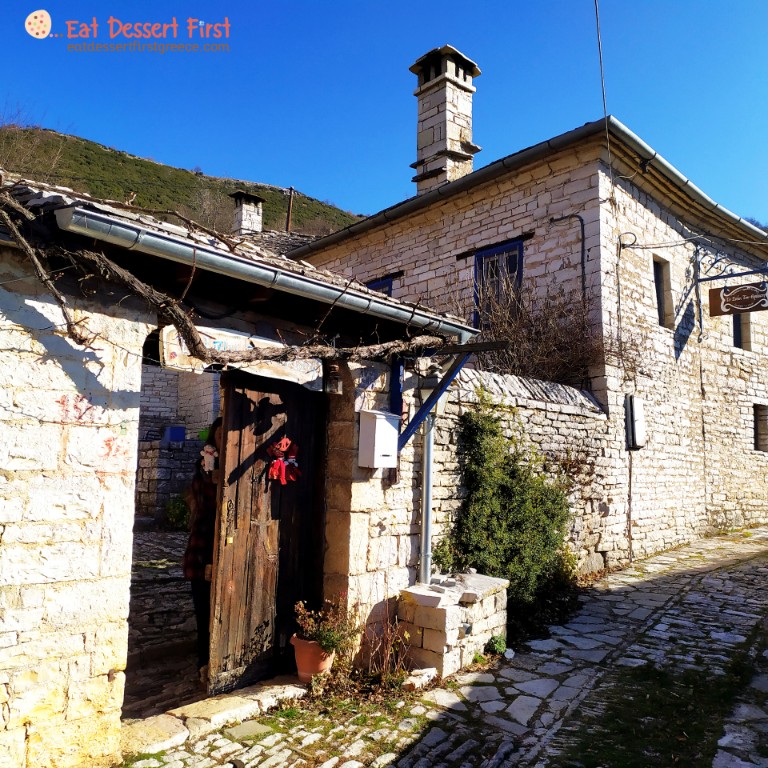
But there was also the Epirus, traditional folk house. This was almost square, like those of the inhabitants of prehistoric Greece. The house is illuminated by an opening in the roof and the door. In the middle of the west wall there is a fireplace. The walls are plastered internally with a mixture of mud and straw, and have recesses in which things were stored. The floor is made of pressed clay. The roof is made of slate supported by wooden beams.
According to our book, this type of house is called strotos and is the oldest house built by man when he left the slum. This guy in the wider area of Ioannina is called a housemother and in the villages of the province of Pogoni he is called a mother of the house because just as a mother gives birth to her children, so this place was the base around which the family would complete other rooms.
We all sat in the main room of the house – the “housemother” as they say in Ioannina – near the fireplace, around the fire that was shining. It was me, my friend, along with his three other brothers, his two parents, his old grandmother and two village servants.
-Come, lady, tell us a fairy tale, tonight we have a guest, my friend said to his grandmother, winking at me with a smile
Διηγήματα, Kostas Krystallis
Having learned those and much more that is written in the Εδεσματολόγιον Ιωαννίνων, Άρτας, Πρέβεζας, Θεσπρωτίας, we decided to focus on the chapter about the famous Epirus pies and learn what ingredients each one contains.
Kasiopita
Pie with flour, grated feta, oil, lukewarm water or milk and salt.
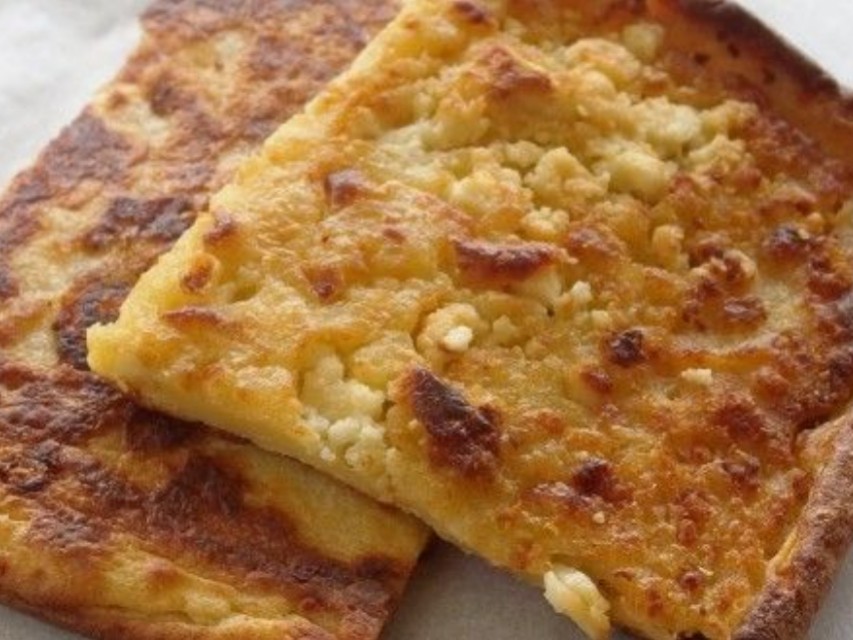
Chicken pie (kotopita)
Pie with chicken, onion, bacon or smoked pork chopped, salt, pepper, phyllo dough, olive oil for the phyllos and béchamel with butter, flour, milk, eggs, yolks, grated graviera cheese and salt.

Pasta pie (makaronopita)
Pie with phyllo dough made with flour, water, salt, egg yolk, olive oil and butter for the spread of the sheets and filling with spaghetti N⁰5, grated kefalotyri, grated graviera, smoked pork in pieces or finely chopped bacon, and pepper.
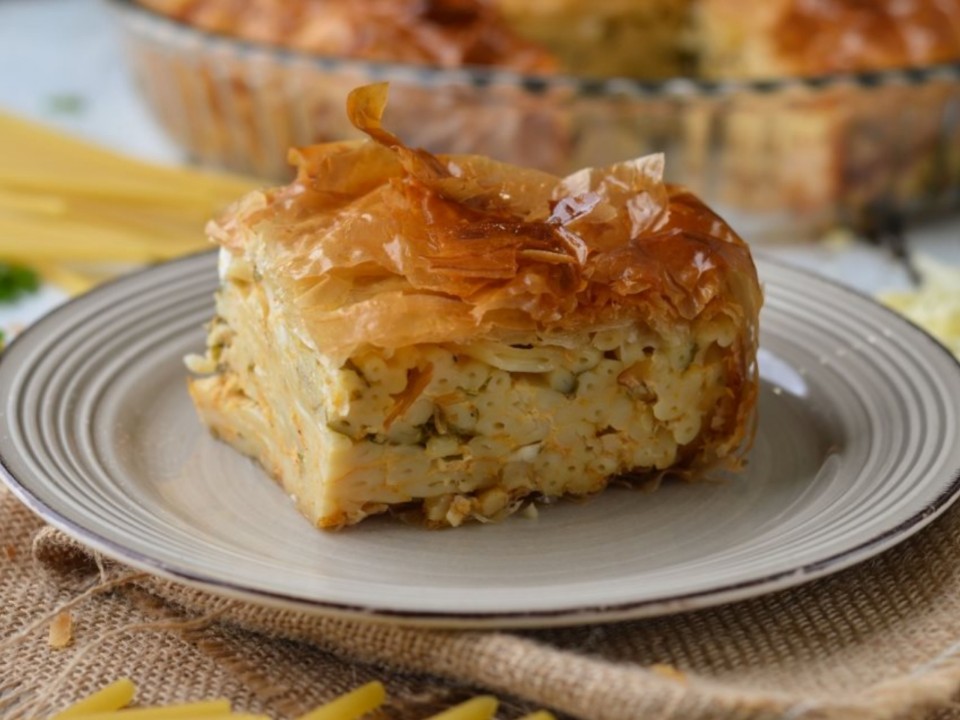
Cheese pie (tiropita strifti)
Pie with phyllo sheets, grated anthotiro cheese, grated feta cheese, eggs, milk and butter fresh for spreading the sheets.

Ζucchini pie (kolokithopita) with cheese from Metsovo
Pie with grated zucchini, cornflour, chopped spring onions, chopped parsley, grated feta, melted butter, trachana, salt and pepper.
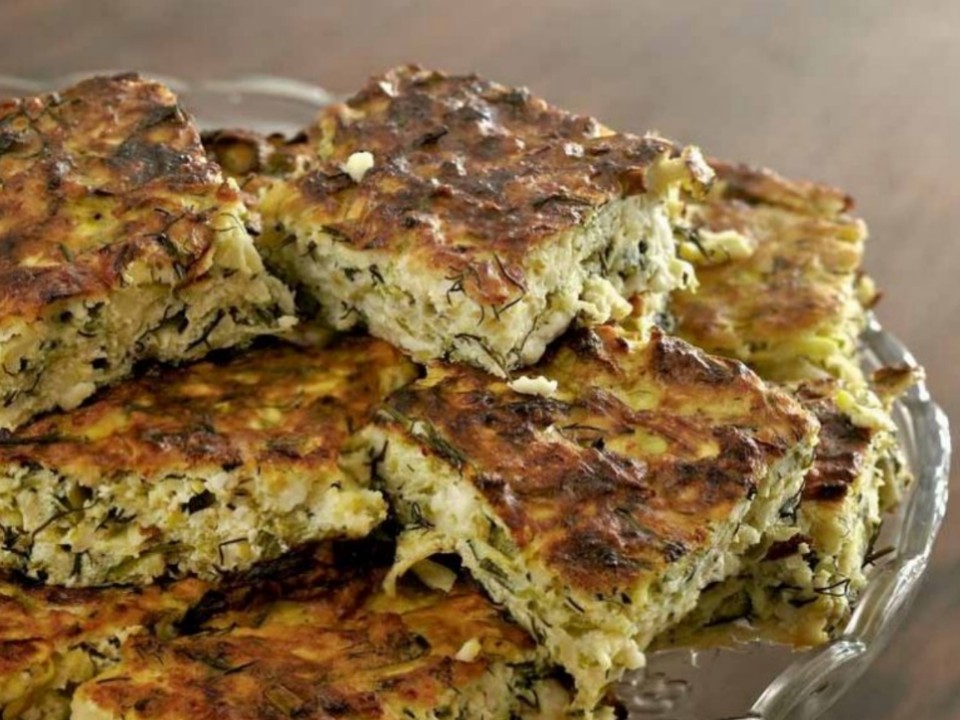
Minced meat rolls (flogeres me kima)
Rolls with crust phyllo sheets, minced meat, chopped onions, fresh butter, kefalograviera cheese, egg, milk, salt, pepper and butter for the sheets.

Cheese rolls (flogeres me tyria)
Rolls with crust phyllo sheet and butter for spreading, with béchamel with fresh butter, flour, milk, pepper, salt and filling with kefalotyri, grated feta cheese, grated Metsovo cheese, grated Metsovo kaseri cheese, eggs and milk.
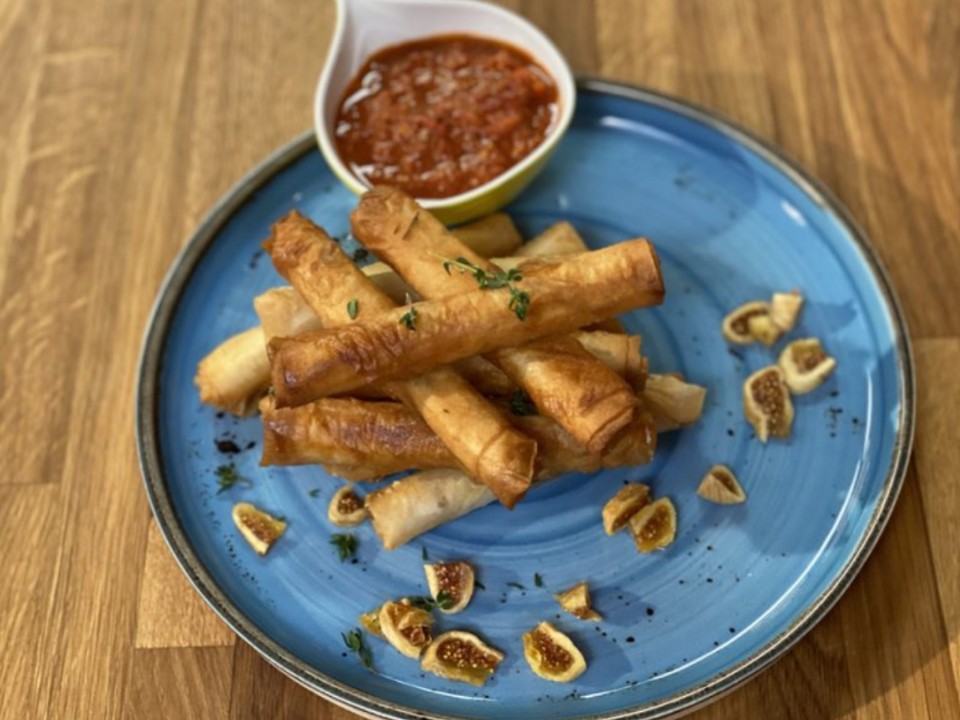
Bobota with cheese (bobota me tyri)
Pie with cornflour, wheat flour, oil, water, milk, eggs, feta cheese, bacon powder, salt and sugar.

Ζarkopita
Pie with sheep’s milk, coarse semolina, sugar, butter, eggs, lemon zest, orange zest and grated cinnamon.

Sweet patsavouropita
Pie with crust phyllo sheets, sugar, strained yogurt, corn oil, eggs, baking powder, vanilla, lemon or orange zest, coarsely chopped walnuts for garnish, ground cinnamon and syrup with water, sugar, cinnamon sticks, lemon peel, cognac and lemon juice.
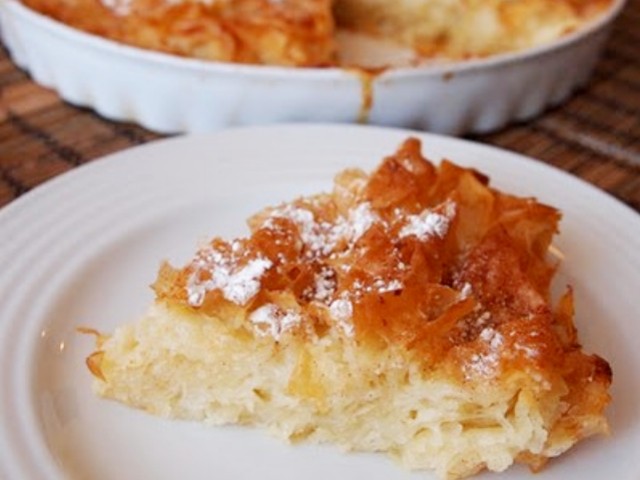
Batsaria
Pie with wheat flour, cornmeal, eggs, milk, yogurt, oil and salt and stuffing with various coarsely chopped greens, finely chopped spring onions, salt and pepper.
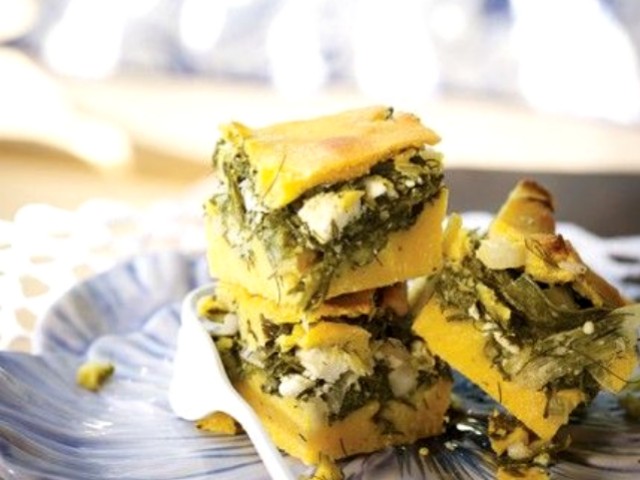
Leeks pie (prasopita)
Pie with dough made with cake flour, water and salt and filling with leeks, trachana, feta and olive oil.
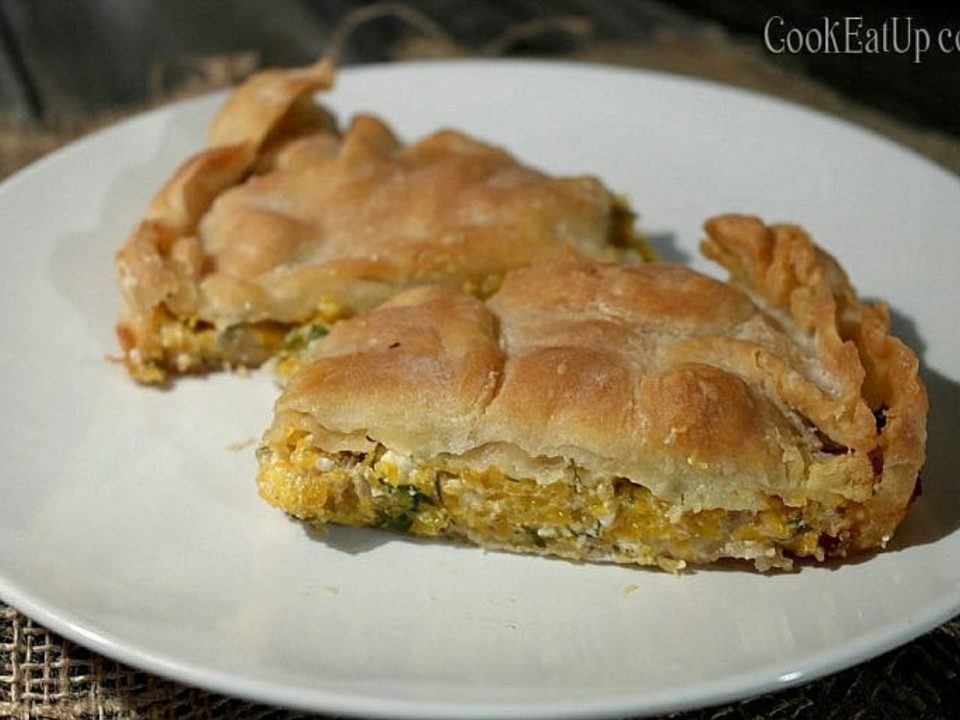
Mushroom pie (manitaropita) from Zagori
Pie with a sheet made with all-purpose flour, lukewarm water, corn oil, salt and sugar, and stuffing with mushrooms, smoked ham or bacon, onions, grated cheese, fresh butter, milk, salt and pepper.
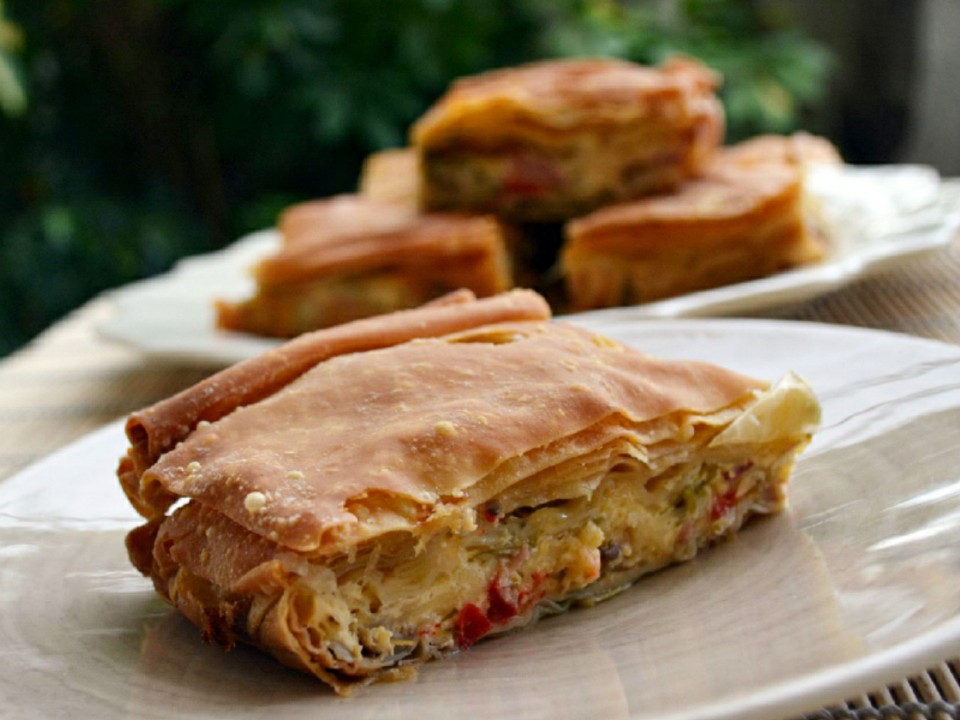
Rice pie (rizopita)
Pie with rice, crushed walnuts, sugar, black raisins, oil, cinnamon and phyllo sheet.

Aubergine pie (melitzanopita)
Pie with phyllo sheets, aubergines, onions, cream cheese, sweet grated graviera, feta, eggs, parsley, sugar, olive oil, salt and pepper.
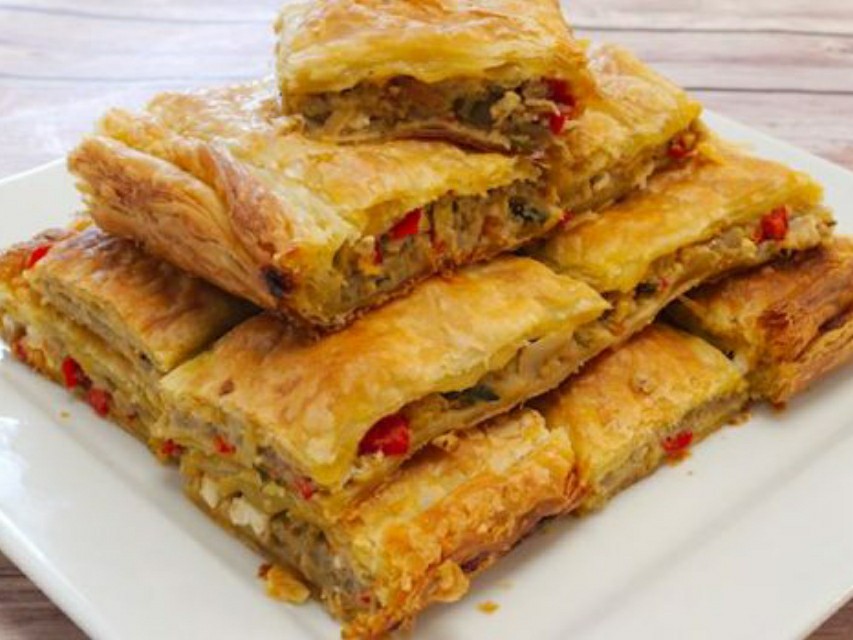
Minced meat pie (kreatopita) from Ioannina
Pie with pita leaves, minced meat, rusks, milk, eggs, butter, grated gruyere, onions, tomato paste, chopped parsley, salt, pepper, cinnamon stick or allspice.

Leitourgia (Prosforo)
Orthodox blessed bread with flour, sourdough, salt and lukewarm water.
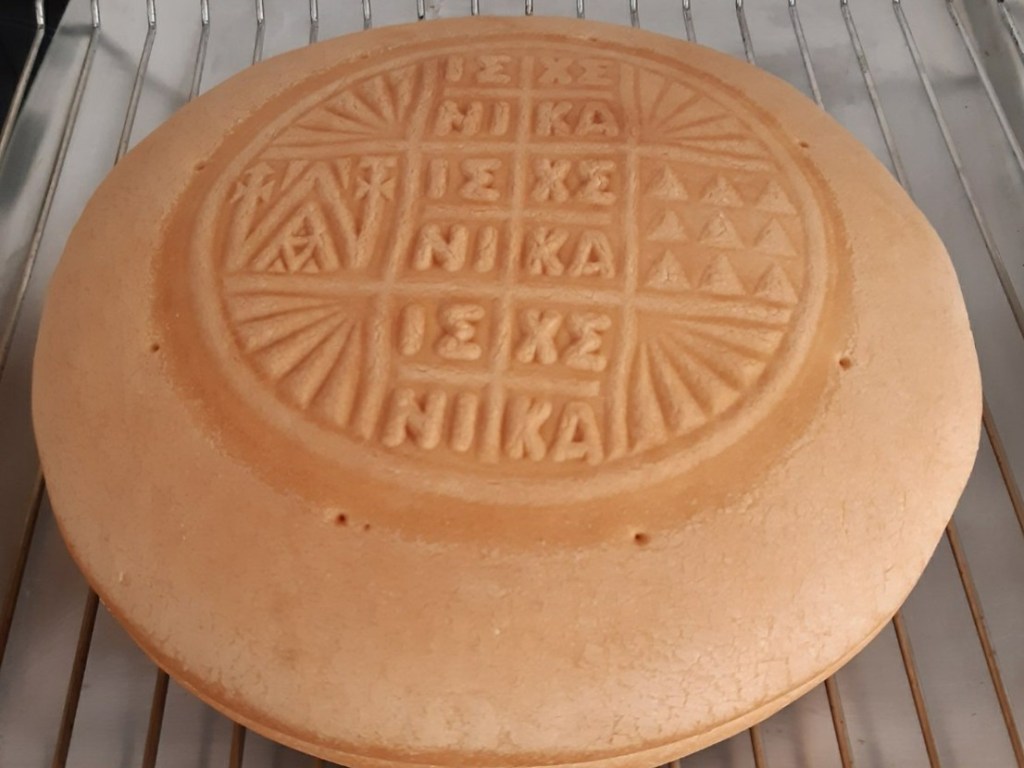
Bobota with raisins
Pie with cornflour, baking soda or baking powder, sugar, black raisins, lemon or orange zest, oil, cinnamon, cold water.
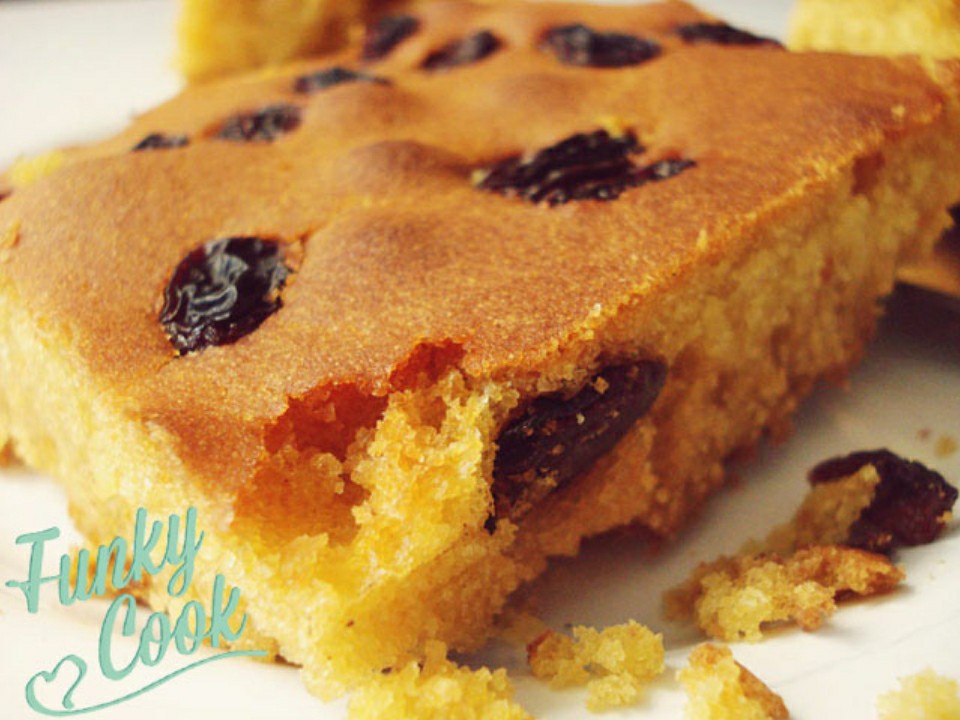
Mini cheese pies (tyropitakia) with honey
Mini pi, egg, olive oil, milk, yolk for the spread, lukewarm water and salt, and filling with grated feta, eggs, chopped parsley or mint, honey for garnish and oil for frying.
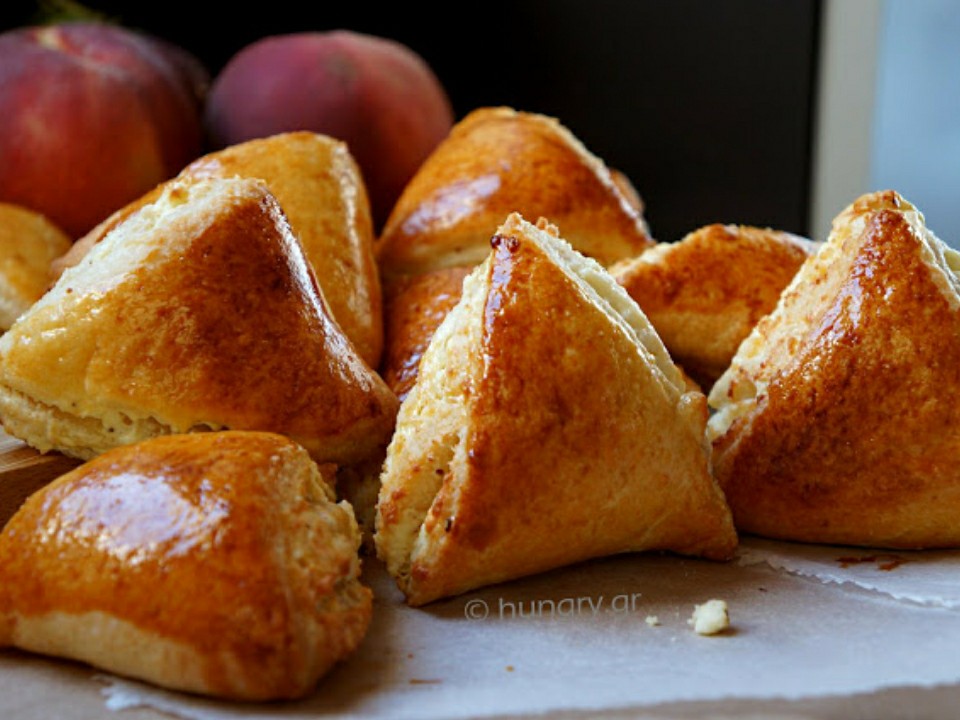
So many nice pies that you do not know with which one to start… After a little thought, we chose zarkopita. Zarkopita is usually salty, but in our book, the Εδεσματολόγιον Ιωαννίνων, Άρτας, Πρέβεζας, Θεσπρωτίας, we found a sweet version that we really liked and wanted to try it.
Zarka we learned that means naked, without phyllo sheets. As we read in the Gastronomic Guide of the Regional Unit of Arta, zarkopites were cooked at the festivals of July and August. Let’s go for a homebaked zarkopita now!
Zarkopita
*We translate the recipe as it is included in the book.

Ingredients for the zarkopita
| Sheep’s milk | 1½ kilo |
| Coarse semolina | 10 tablespoons |
| Sugar | 1½ cup |
| Butter | 4 tablespoons |
| Eggs | 5 |
| Zest | from 1 lemon and 1 orange |
| Grated cinnamon | 1 teaspoon |
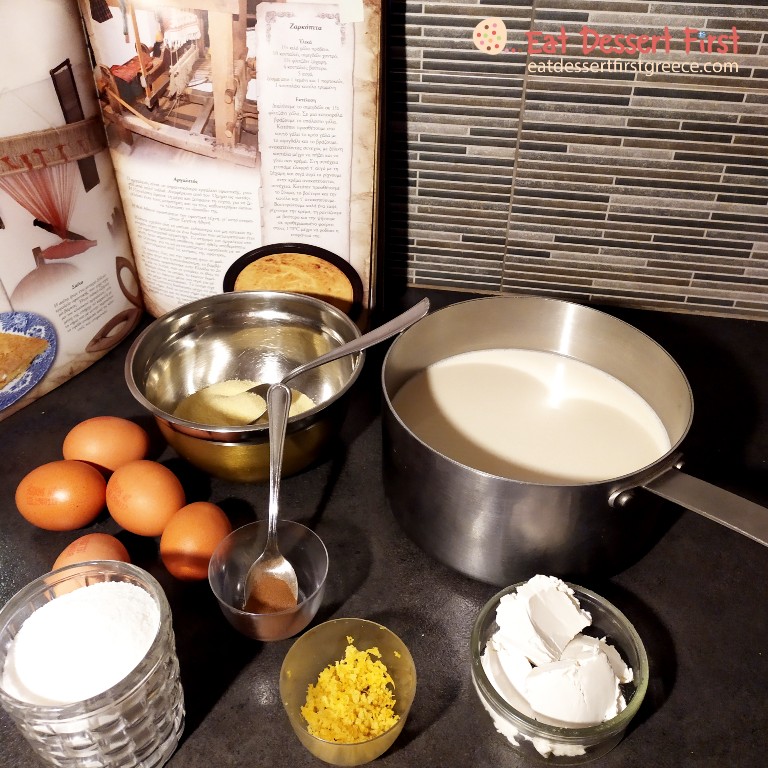
How to make the zarkopita
Dissolve the semolina in 1½ cup of milk. Boil the rest of the milk in a saucepan. Then add the cold milk with the semolina to the hot milk and boil it, stirring constantly with a wooden spoon until it thickens and becomes like cream. Then lightly beat the eggs with the sugar and slowly add them to the cream, stirring constantly. Then add the zest, butter and cinnamon and mix. Grease a pan well, pour the cream, sprinkle with butter and bake in a preheated oven at 170°C until the surface is golden brown.
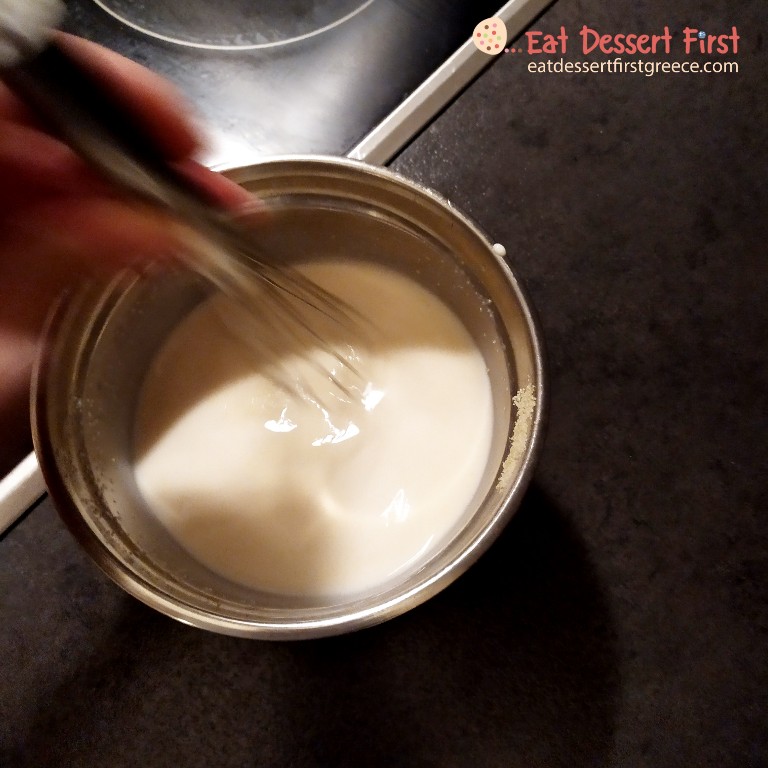

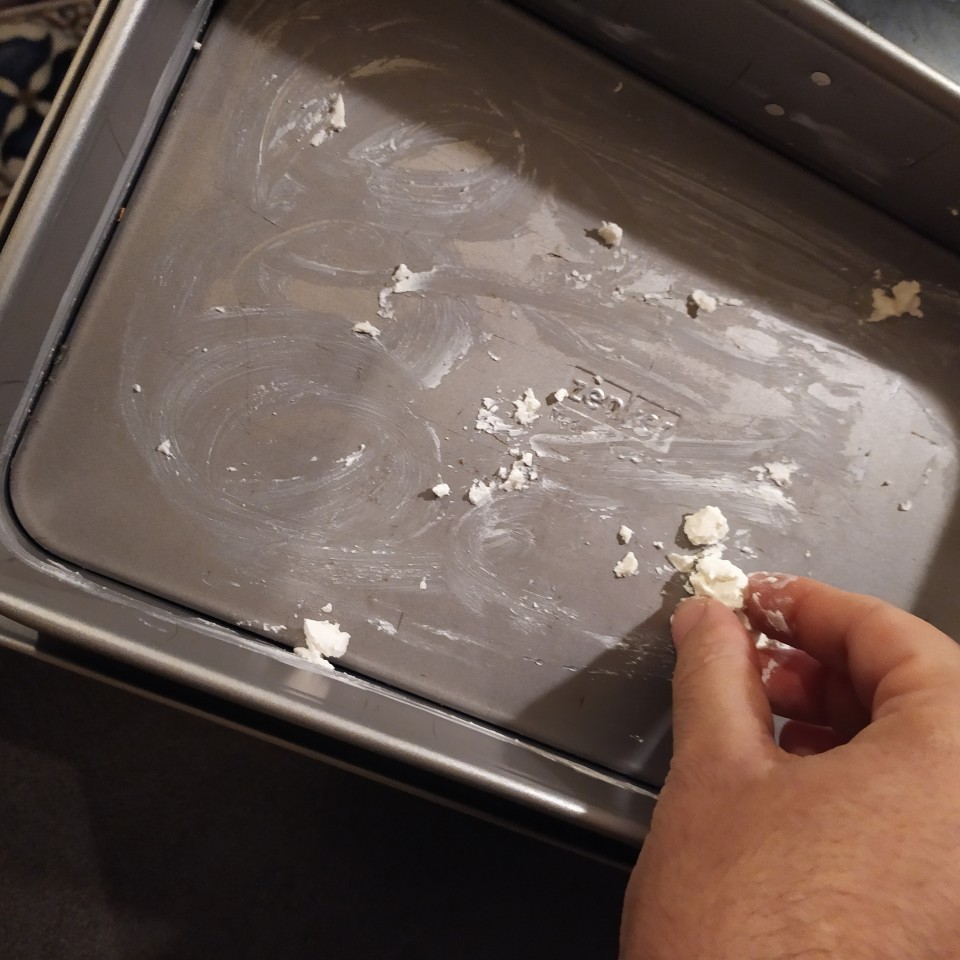

Once it cools down a bit, cut it into pieces and serve!


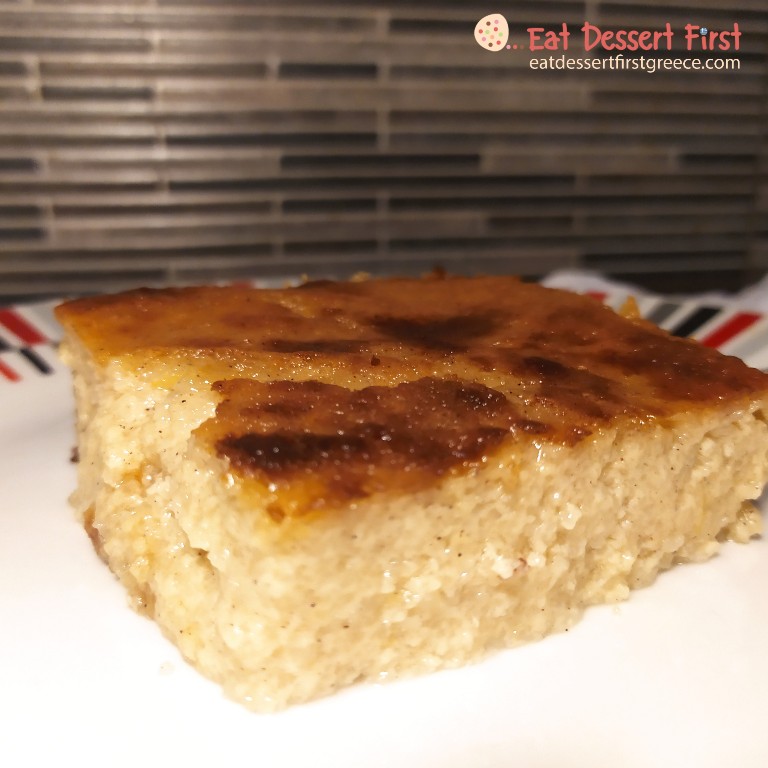
Enjoy everyone!
Be the first one to read our new articles!
Find us on our social media:
- Instagram: @eatdessertfirstgreece
- Facebook profile: Giorgos Eliza Vlachakis
- Facebook page: eatdessertfirstgreece
- Twitter: @eatdessert1stGr
- Pinterest: eatdessert1stGr
- WordPress: Eat Dessert First Greece
- LinkedIn: Eliza Neofytou
- Reddit: eatdessertfirstgr
Follow us by filling in your email in the field at the bottom of our website, so that every new article will be emailed to you as soon as it is released. Do not forget to confirm your registration, in the email that will come to you! 🤗 Those of you who are wordpress bloggers, just click follow.


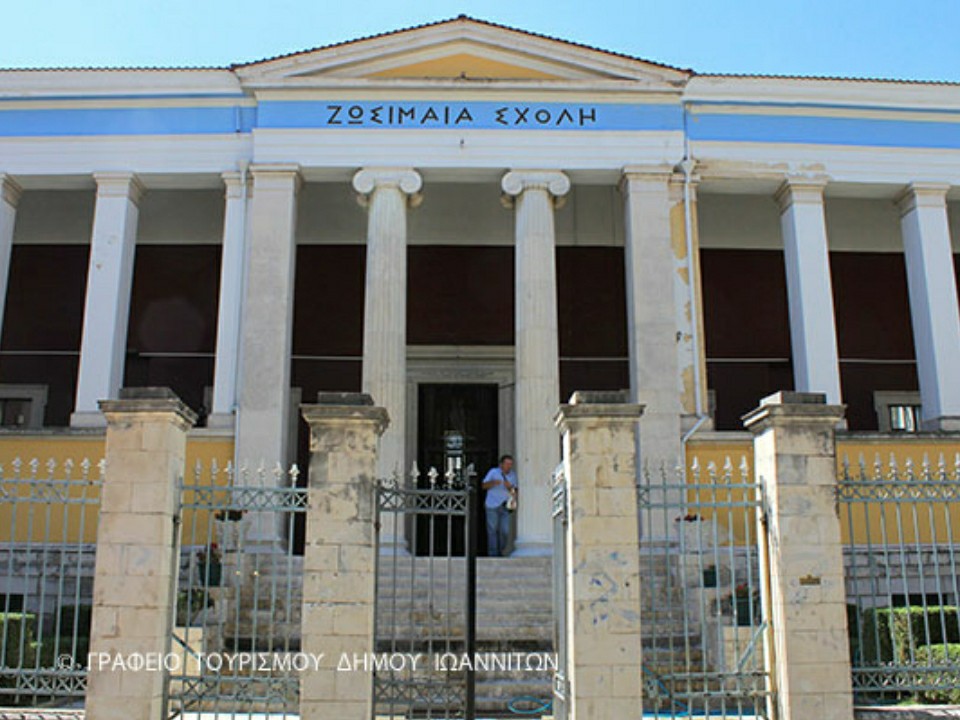

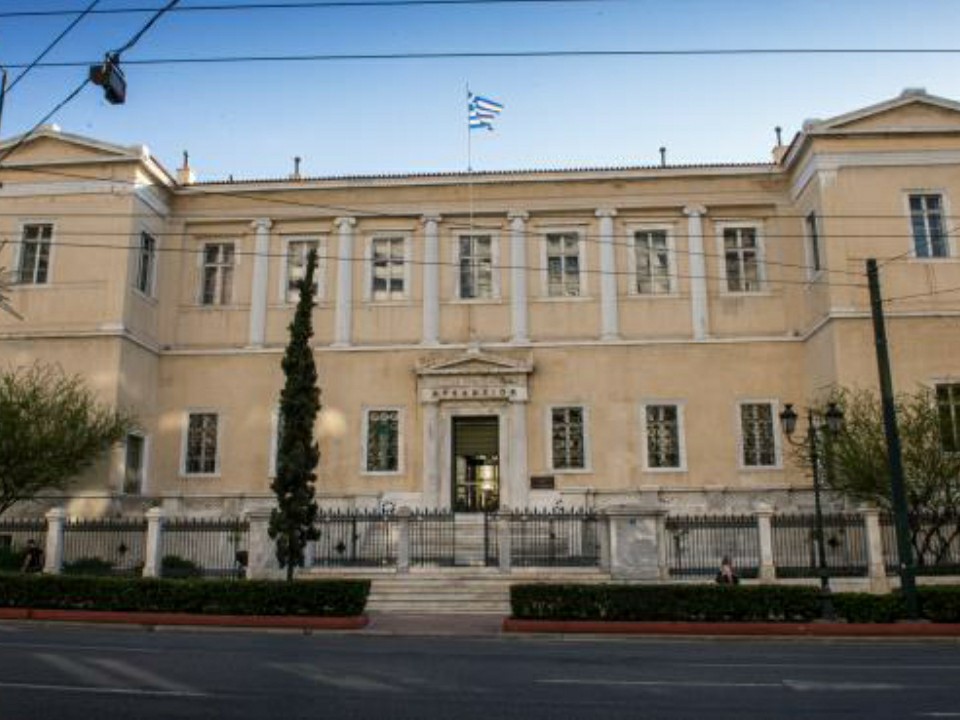
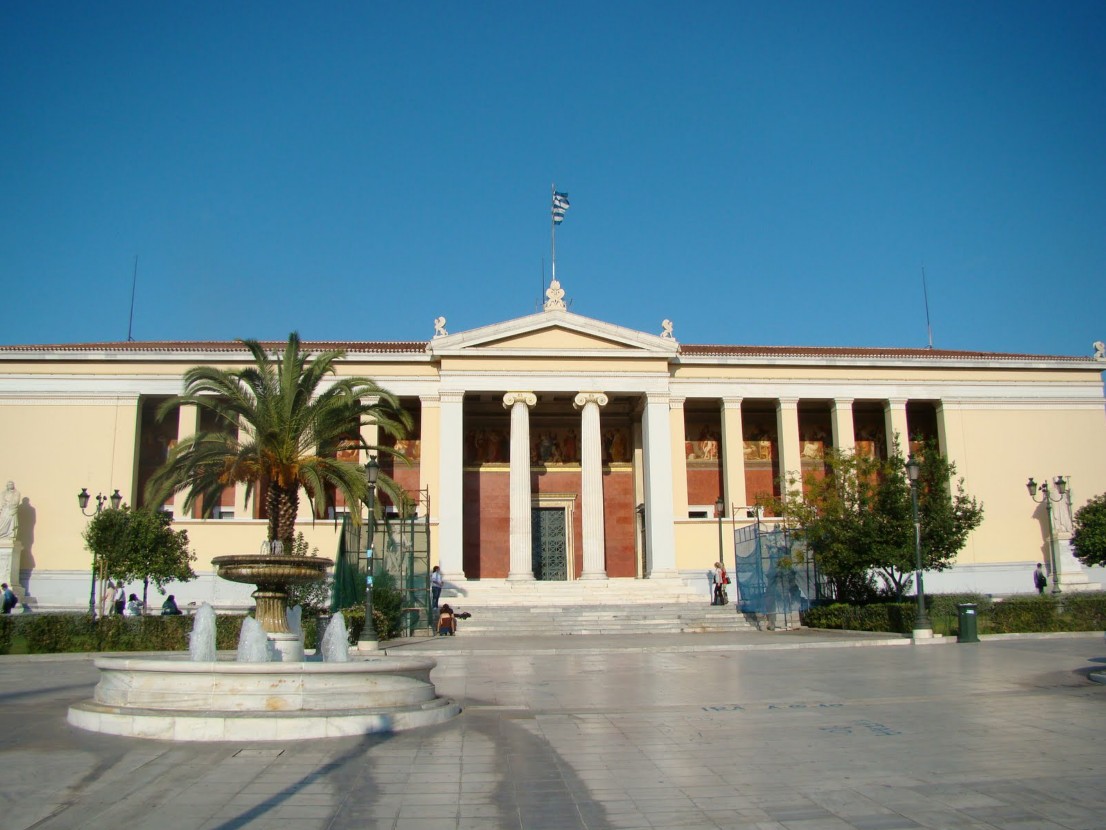
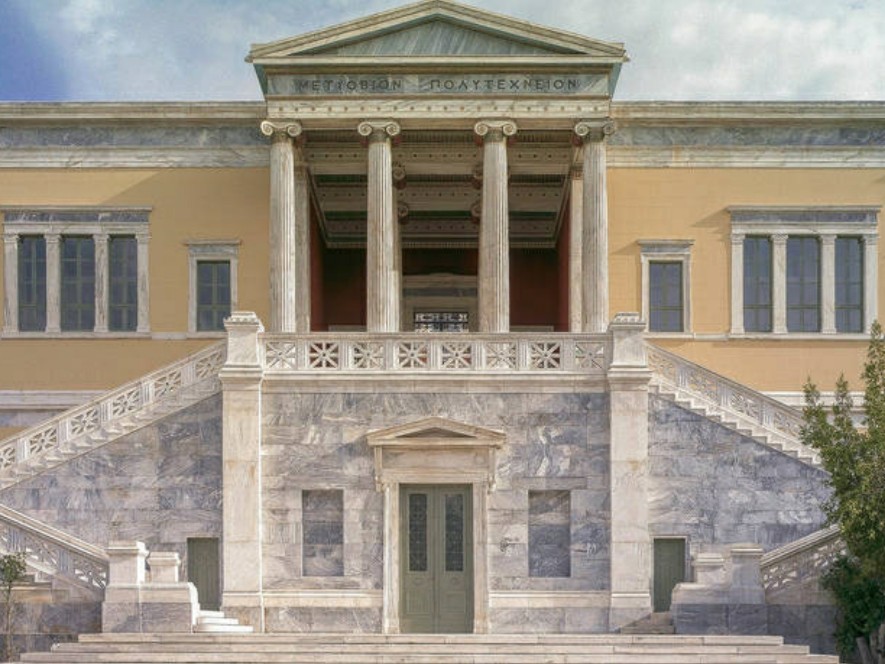
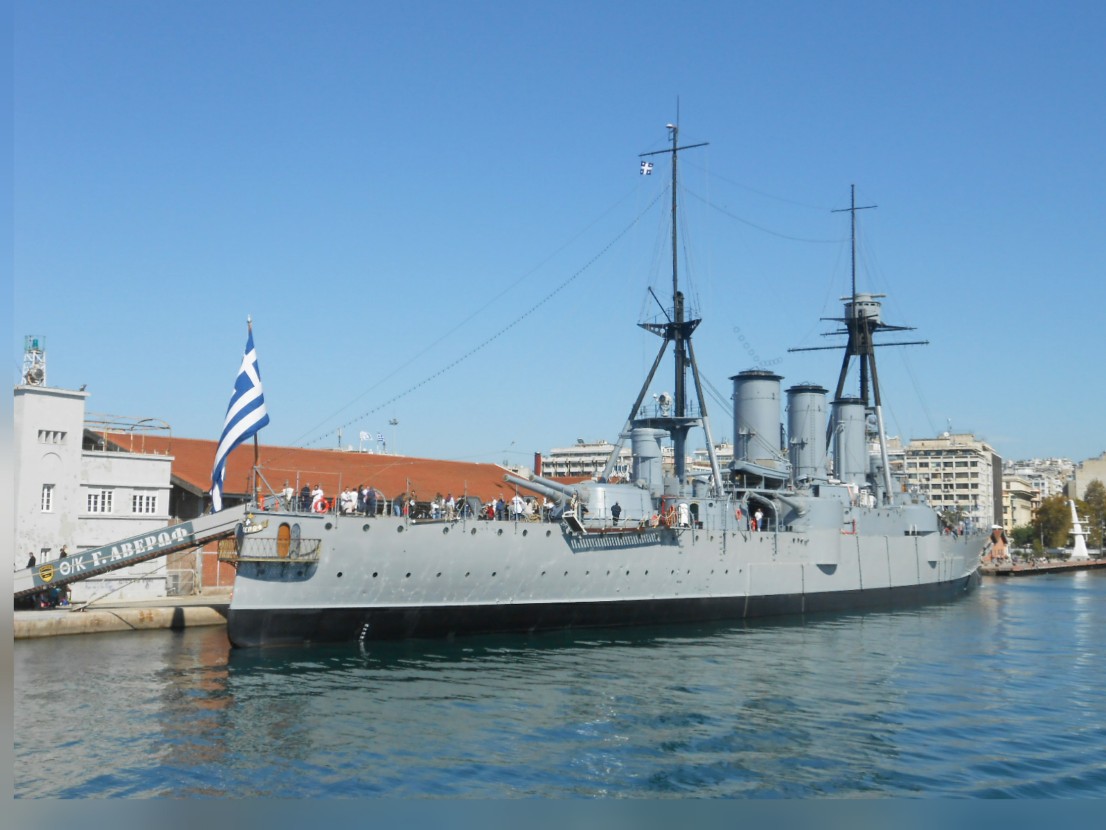
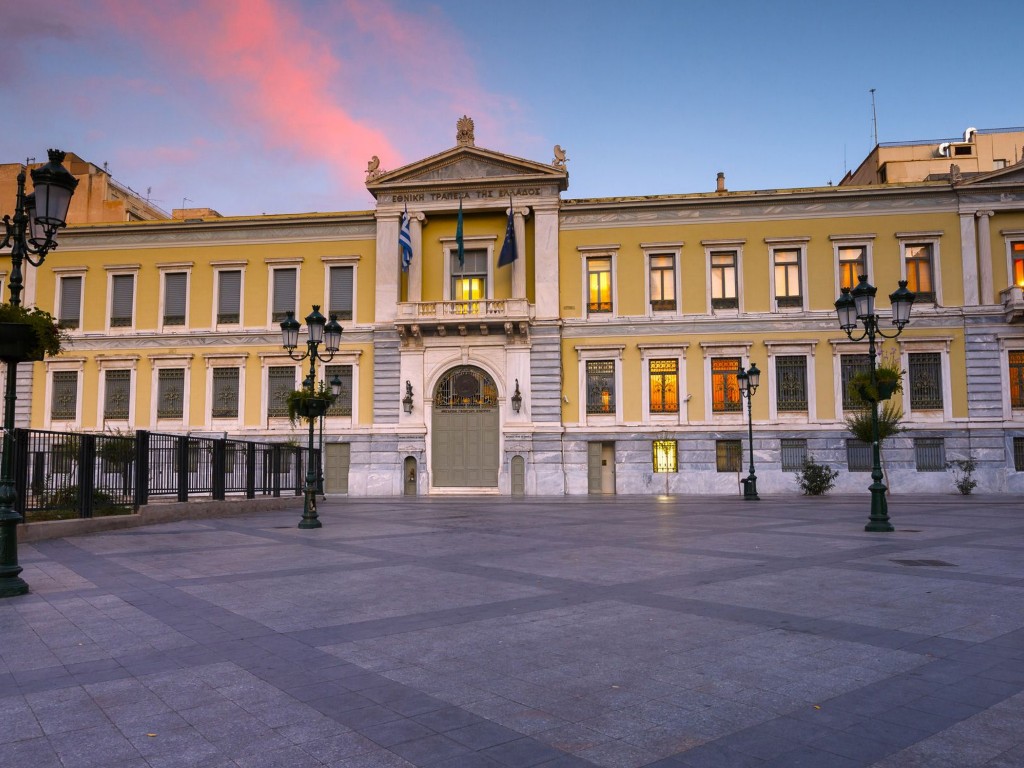

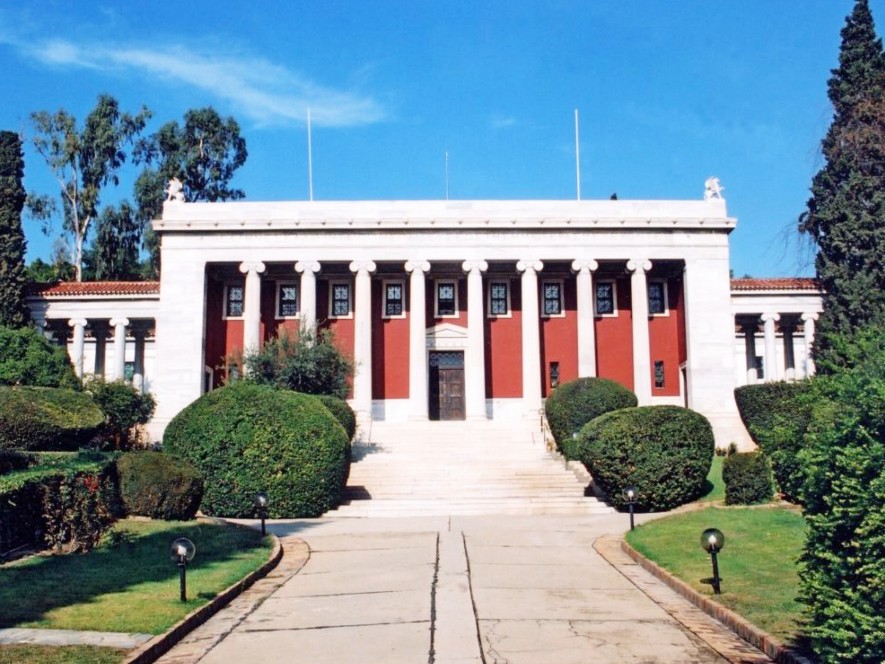
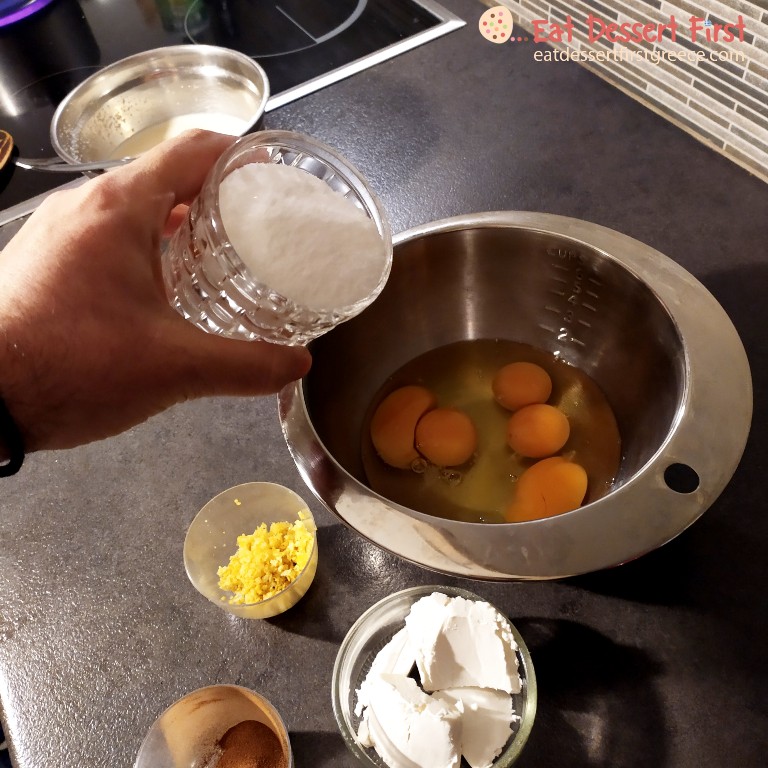

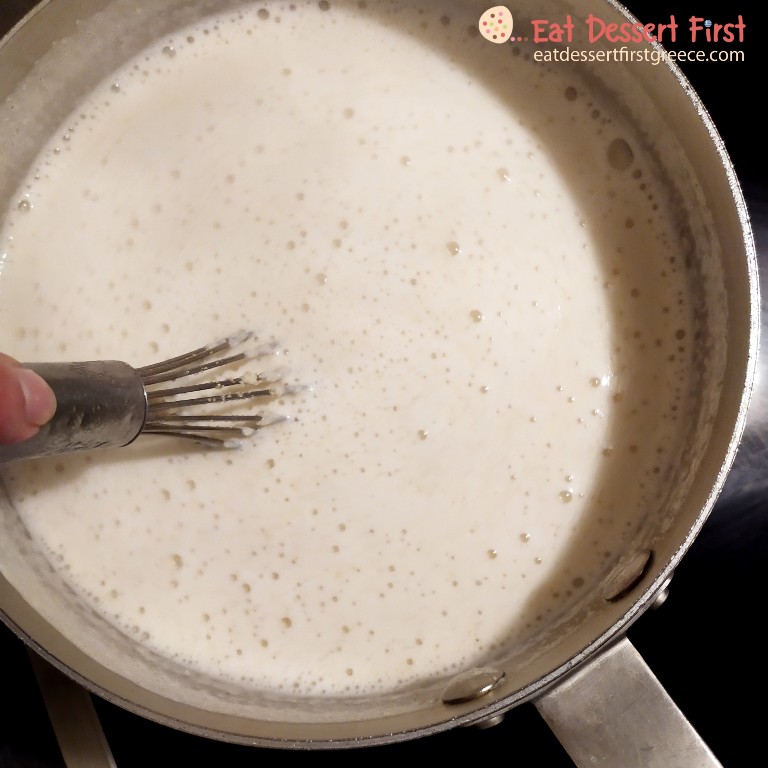
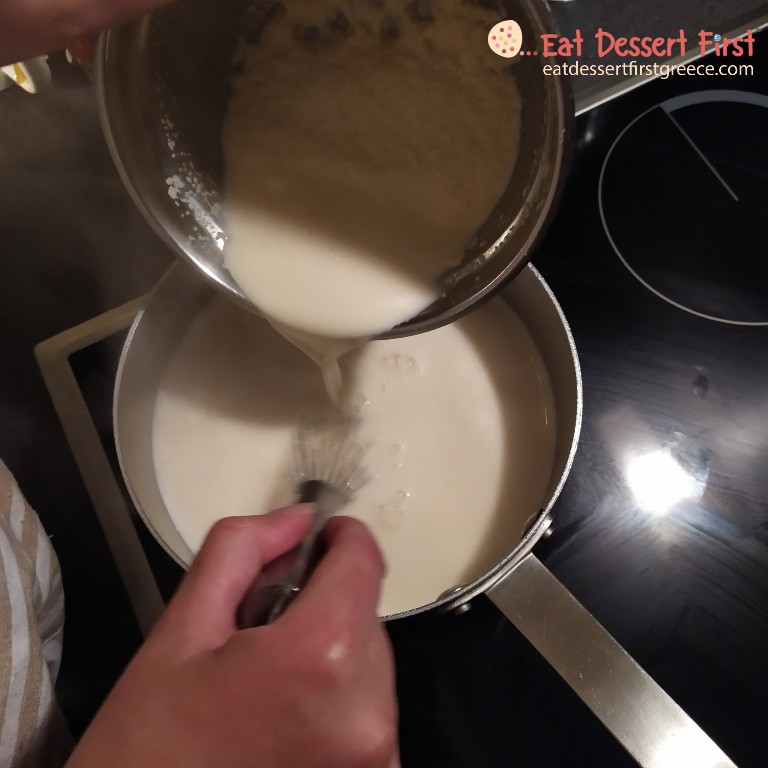

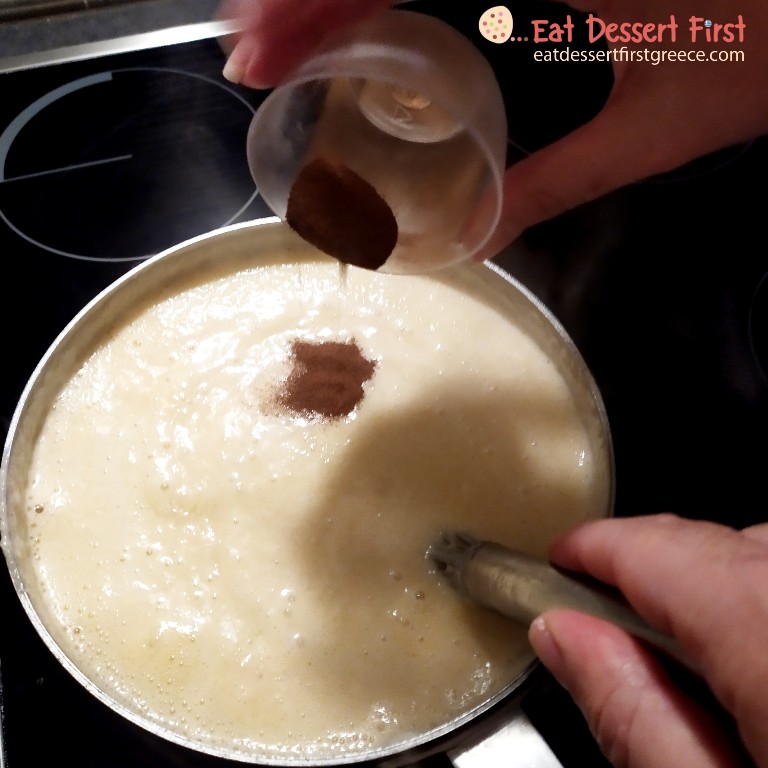
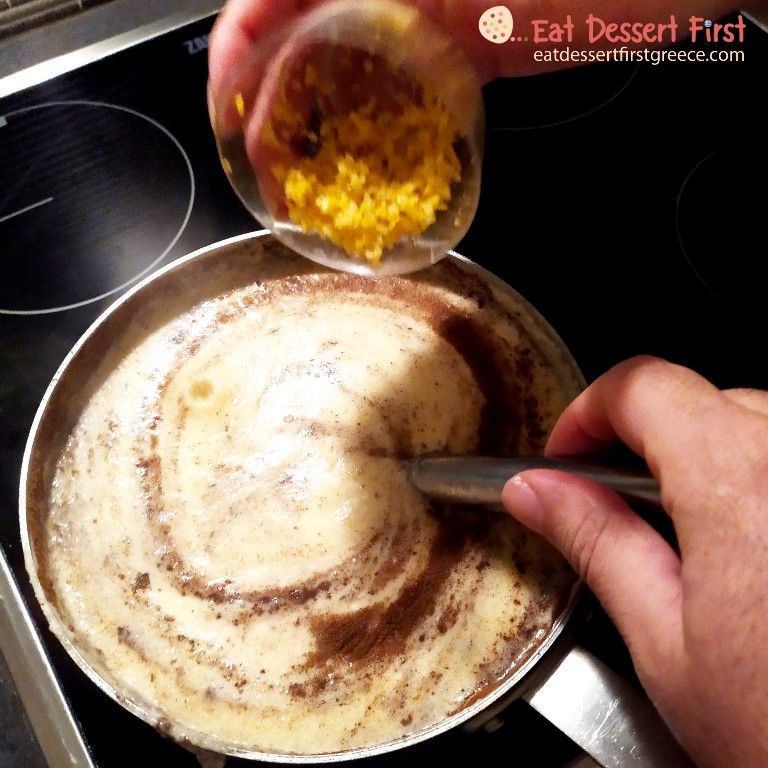

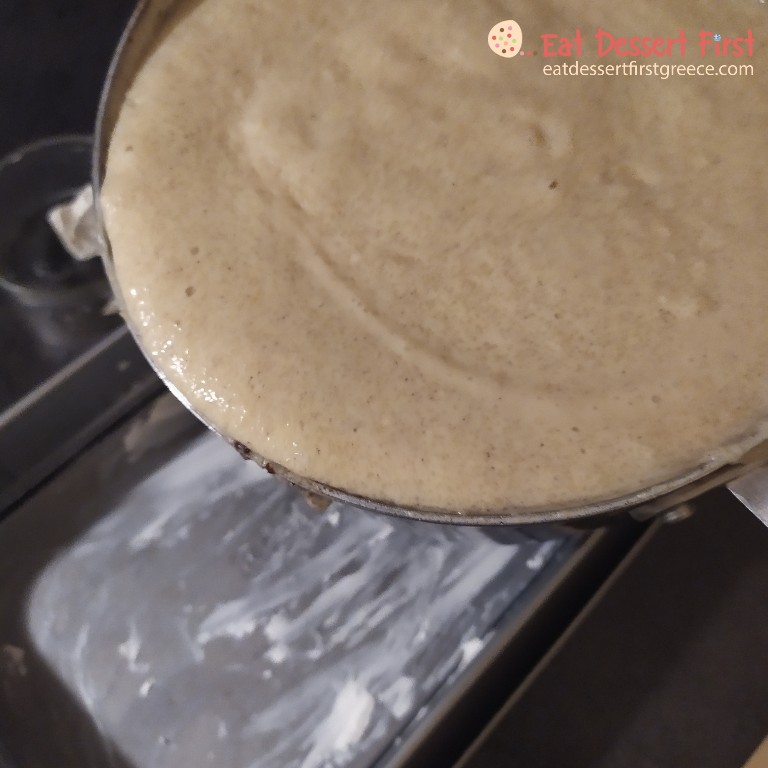
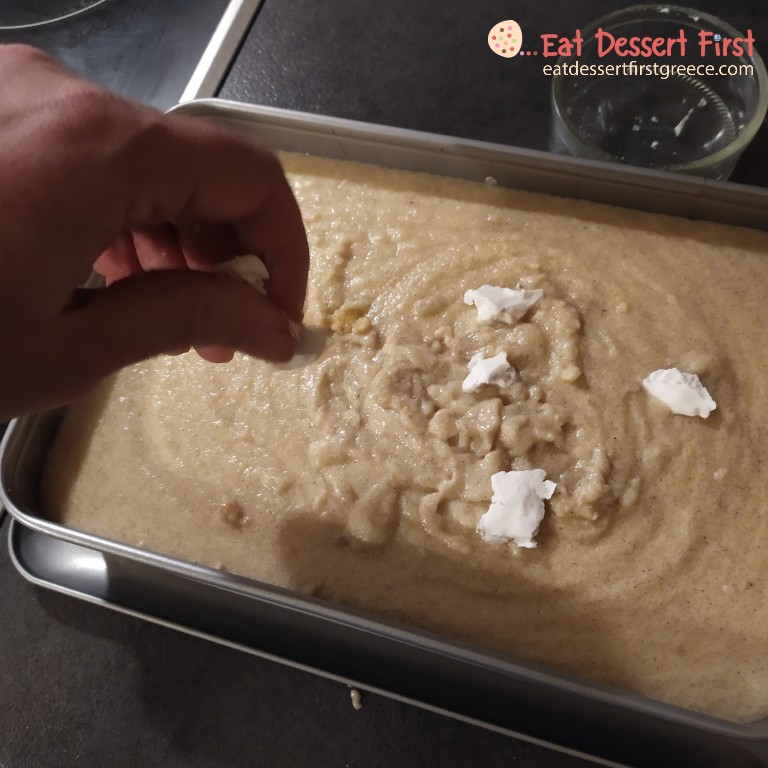
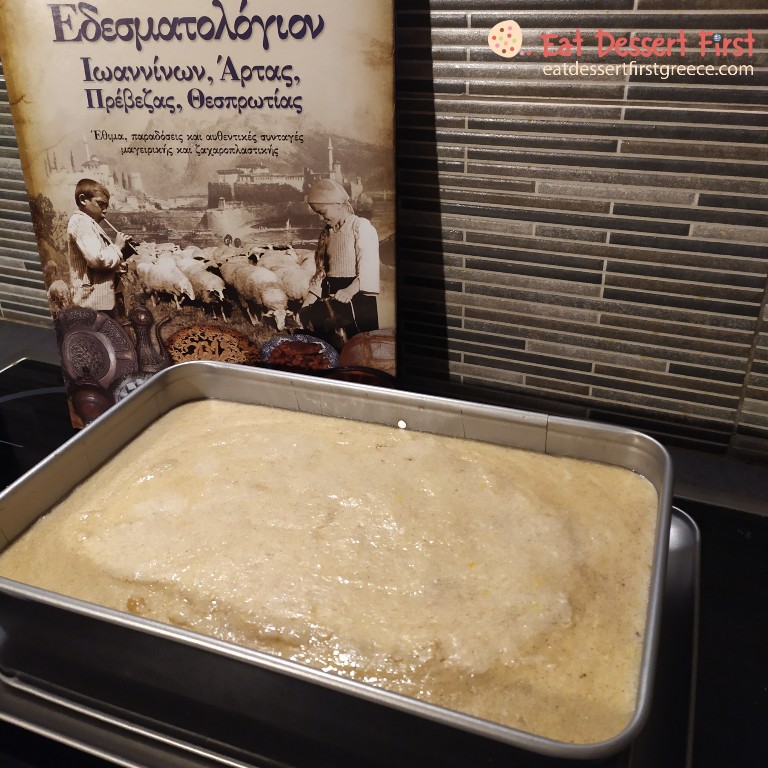
I miss Greece ! 🙂 Thank you for this post ! Warm Greetings 🙂
LikeLike
Warm greetings from us, too! Thank you very much for your kind comment! 🙂🙂
LikeLike
Really impressive post guys. Love the history, the cultural insight… and those dishes! Particularly the makaronopita and melitzanopita. Greece is just one of many countries I hope to see more of in the coming years.
LikeLike
Thank you very much our friend for your kind comment and for your wish to travel to our country!! 🙂🙂
LikeLiked by 1 person
The nice food makes me forget about everything about the history I read about earlier.
LikeLiked by 1 person
Haha thank you very much our friend oldhuang! Hope you are fine! Have a nice day!
LikeLike
What a very interesting article and amazing recipes..thanks for sharing..
LikeLiked by 1 person
Thank you so much our dear friend Sally for your kind words and your support! 🙏🙏🌹🌹
LikeLiked by 1 person
Pleasure.. terrific post..x
LikeLiked by 1 person
🙏🙏♥️♥️
LikeLiked by 1 person
Thank you so much ! 🙏🙏
LikeLike
Thank you so much dear Sally for sharing our article, for your kind words and for your support! 🙏🙏♥️♥️
LikeLike
Those pies look so good!!
LikeLiked by 1 person
Thank you so much dear Liz!!!
LikeLiked by 1 person
You’re most welcome!
LikeLiked by 1 person
Wow..yes please to all of them…especially the first one and the ones with feta which is my favourite cheese… this one also was a favourite I am assuming cows/goats milk will be ok as I doubt if I can’t get sheep’s milk I can get fresh goats milk and cows milk…Love the history and the recipes 🙂
LikeLiked by 1 person
Thank you very much our dear friend Carol for your nice comment! It will be great with fresh cows/goats milk! Have a nice day! 🙂🙂
LikeLiked by 1 person
Thank you…You are very welcome such delicious pies..I will have make all of them…:)
LikeLike
😊😊🙏🏽🙏🏽❤️ 🧡
LikeLike